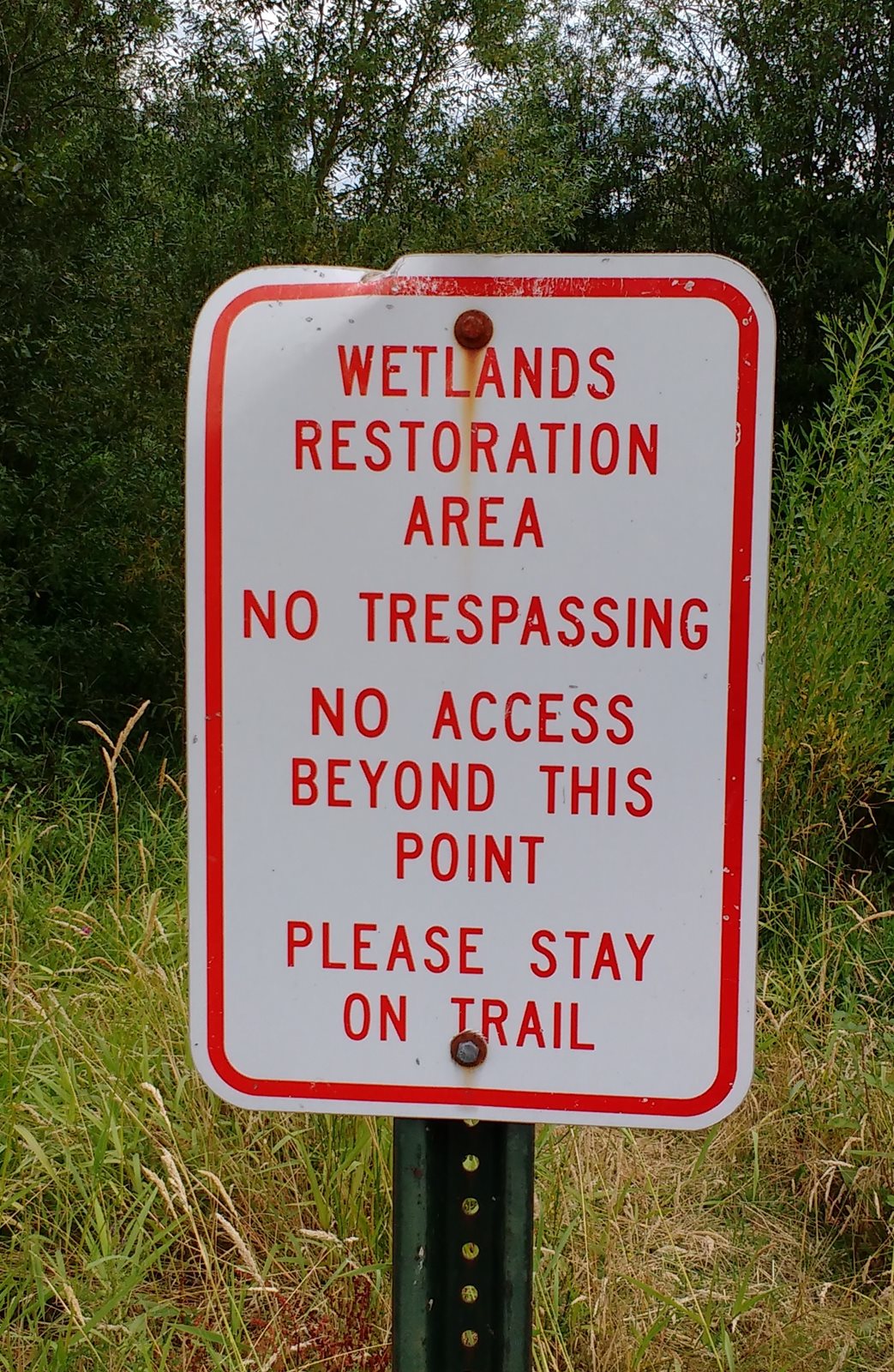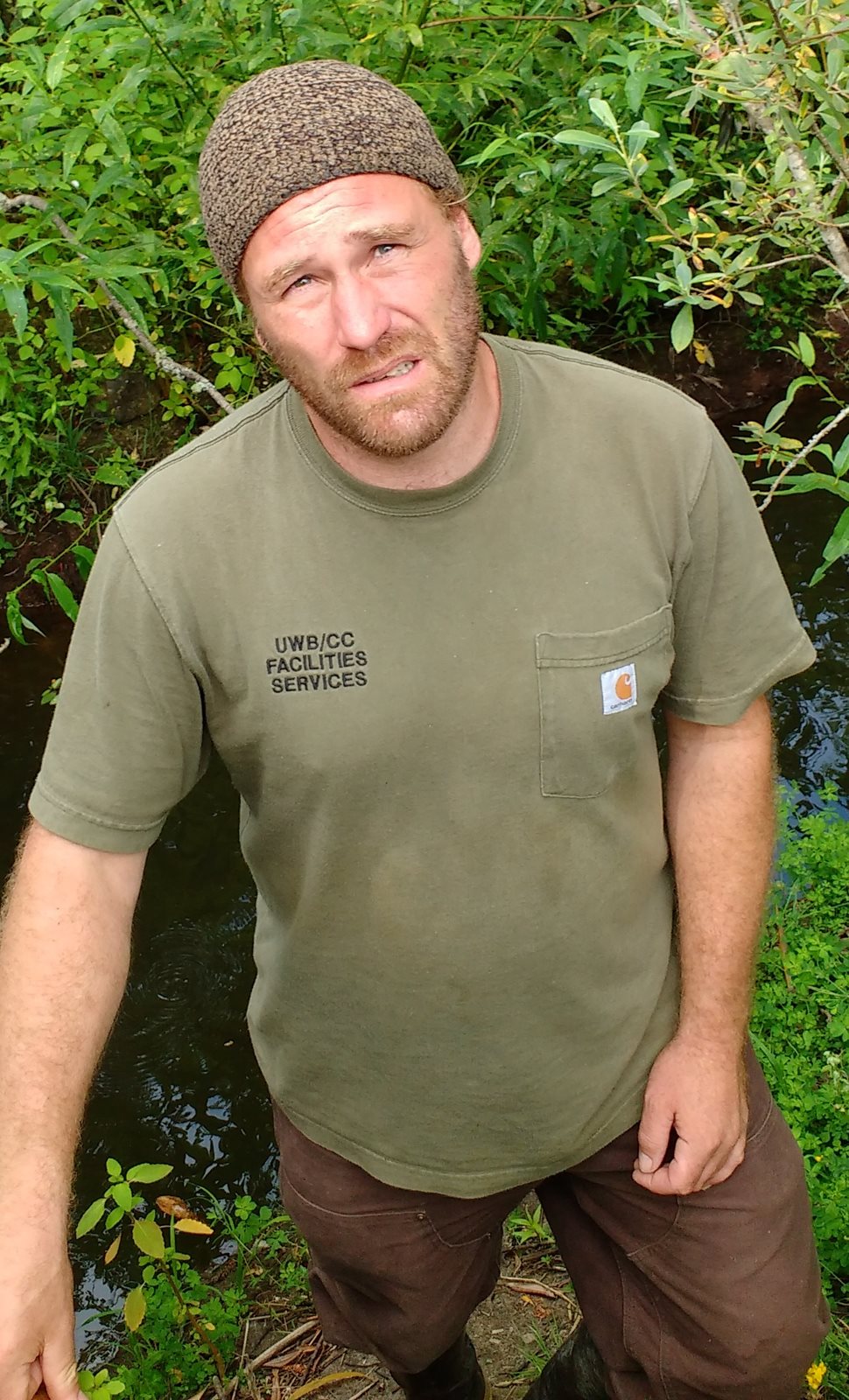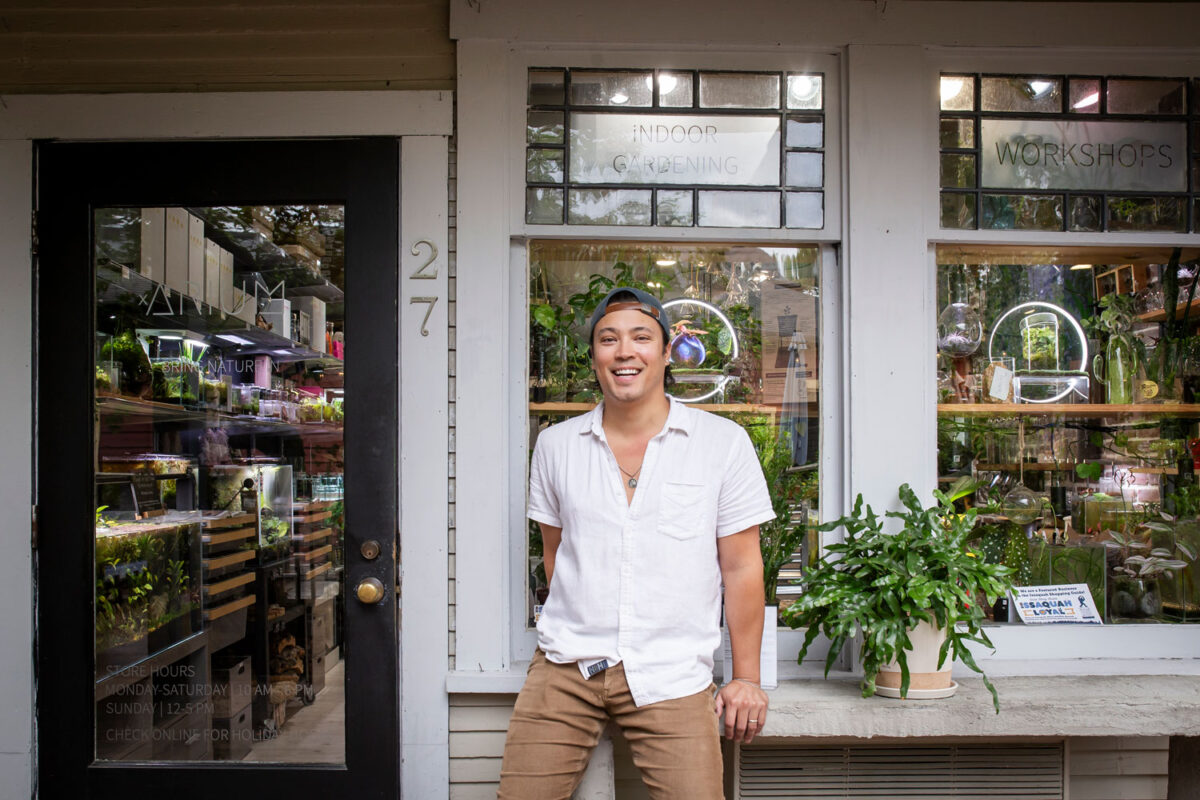
By Douglas Esser
The wetlands that make up about half of the University of Washington Bothell campus are a rich research opportunity, a community resource and the front line in the campaign against non-native plants and dam-building beavers.
One of the almost daily tasks for Gabe Barnes, gardener lead, and the wetlands crew is taking a few sticks off the top of a beaver dam, left, to lower a pond that otherwise would threaten to flood a larger portion of the wetlands deep enough to kill trees.
“They can really quickly alter the state of this place,” says Barnes.

Ghostly trunks of alders stand witness to the depth of a 25-acre pond that was drained in 2012 because the flooding threatened the siting of the Sarah Simonds Green Conservatory. Although the large big beaver dam was removed from North Creek, another dam lodging a family of up to six beavers remains.
Beavers are so innately adapted to using wetlands, Barnes, right, calls them a “secret society.” For example, he says beavers see the dead alder and know that a beaver pond once existed there – and could again, if they got busy.
Beavers also chew down coniferous trees planted in the wetlands because the animals instinctively know they could outgrow the beavers’ preferred food – alder, willow, aspen and dogwood.
“The beavers are actually smart enough that they know the evergreen trees will eventually shade out the trees they eat. So they chew down our cedars and firs, even though I don’t think they enjoy it,” Barnes says. “They get sap all over their teeth and I’m sure it tastes bad.”
The regular daily work for the wetlands crew is removing non-native invasive plants. Reed canary grass, purple loosestrife, jewel weed and Scotch broom must be regularly pulled. If anyone runs out of work, there are always blackberries, the thorny, fast-growing berry canes that have to be hacked out by the roots.
Barnes has worked in the wetlands since 2002. He and fellow workers are the “unsung heroes of the wetlands,” says Charlotte Rasmussen, left, director of undergraduate research. They maintain the wetlands as a functioning flood plain and campus laboratory.
The wetlands are a “huge opportunity” to engage students in research projects, she says. Some research projects have involved water quality, plant varieties and the intriguing, sometimes problematic crows whose numbers approach 15,000 in the winter.
The land where 127-acre UW Bothell sits was once the Boone-Truly ranch. North Creek then ran through a straightened channel before it entered the Sammamish River. Restoring a meandering waterway through the 58-acre wetlands was one of the goals when construction of the campus began in 1997. Much of the farmland was “scraped,” Barnes says in an attempt to remove the non-native species. That dirt created a berm that serves as a barrier between the wetlands and I-405. Photo: Greenhouse at the Sarah Simonds Green Conservatory.
The cattle pasture was transformed back into a native ecosystem that reached 10-year goals in just seven years. One of the largest restorations in the state is an oasis for native plants in an urban landscape. The achievement in maintaining the wetlands has made it a regional model for others, such as Army Corps of Engineers staff.
“The success of this restoration is due to not only to the design and initial implementation, but also very much a result of the sustained commitment to maintenance,” says Warren Gold, associate professor of environmental science and director of the University’s restoration ecology network.
The public is welcome to enjoy the wetlands from the Sammamish River Trail and a wetlands boardwalk. Anyone who wants to explore off the trail needs to follow regulations, which are available online. School groups or members of the public may also ask for a tour. If you like to dig out blackberries, you’re welcome to volunteer.







